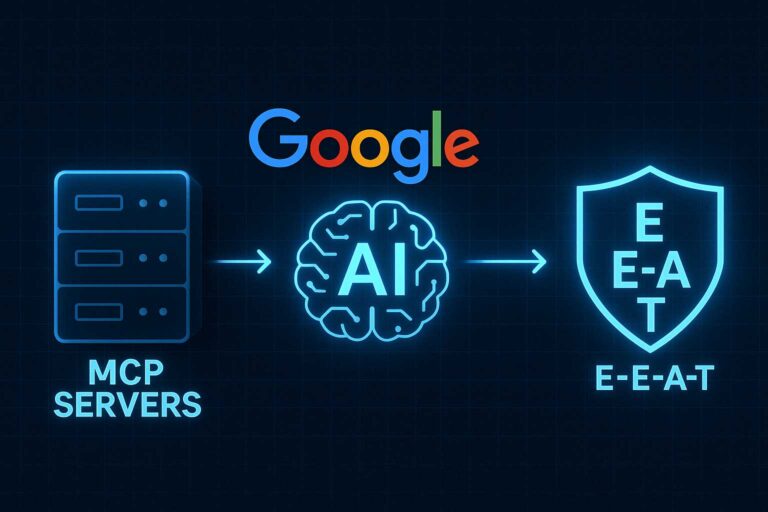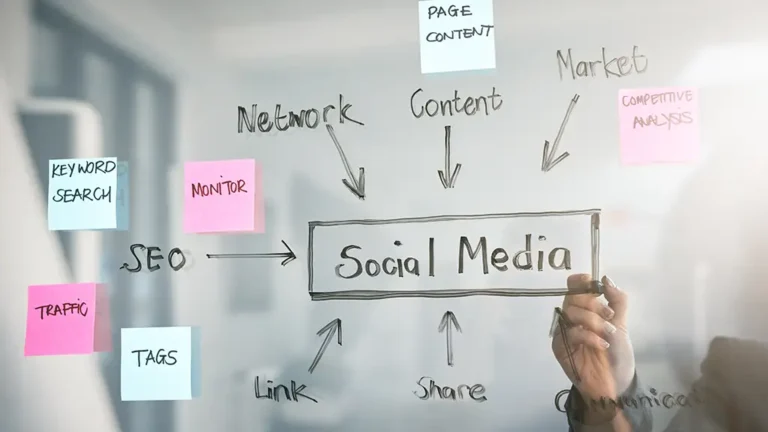AI Vision: Transforming E-commerce
This comprehensive analysis examines how artificial intelligence, particularly computer vision technology, is reshaping the e-commerce landscape for small and medium-sized enterprises in 2025. The report covers current adoption trends, specific applications with proven ROI, implementation strategies, marketing applications, challenges, and future outlook. Business leaders will gain practical insights into how computer vision and other AI technologies can enhance inventory management, customer experiences, and marketing effectiveness while navigating implementation challenges.
Takeaways
- AI adoption in e-commerce shows mixed trends, with 77% of small businesses using AI tools according to one survey, while another indicates adoption dropped from 42% to 28% in 2025
- Computer vision emerges as a transformative technology for e-commerce, enabling visual search, inventory management, quality control, and augmented reality experiences
- SMEs using computer vision for inventory tracking report 40% reduction in stock discrepancies and up to 15x faster inventory counting
- Visual search capabilities are increasingly important, with 62% of Gen Z and Millennial customers wanting this feature in their shopping experiences
- AR virtual try-on technology boosts conversion rates by up to 94% for products with 3D/AR content and reduces return rates by up to 40%
- Cost-effective AI implementation for SMEs relies on cloud-based services, pilot projects, and pre-built solutions with minimal technical requirements
- AI implementation costs vary widely, from $10,000 for basic chatbots to over $90,000 for advanced computer vision systems, with ROI typically achieved within 12-18 months
- AI-powered marketing tools deliver significant results, with personalized recommendations accounting for 24% of orders and 26% of revenue
- Key challenges include data quality issues (causing 80% of AI project failures), integration with existing systems, and evolving privacy regulations
- Future trends point to multimodal AI systems, edge computing for real-time processing, and AI becoming a competitive necessity rather than a luxury for e-commerce businesses
Overview
As of June 2025, artificial intelligence has fundamentally transformed the e-commerce landscape, creating new opportunities and challenges for businesses of all sizes. This comprehensive analysis examines how AI technologies are being implemented across the e-commerce ecosystem, with a particular focus on applications relevant to small and medium-sized enterprises (SMEs).

The research reveals a complex and sometimes contradictory picture of AI adoption in e-commerce. While some reports indicate widespread integration of AI tools across the industry, others suggest a recent decline in adoption rates among smaller businesses. This analysis explores these trends, examines specific AI applications with proven ROI, and provides strategic guidance for SMEs looking to leverage AI technologies effectively.
Computer vision emerges as a particularly promising AI technology for e-commerce businesses, offering solutions for inventory management, personalized shopping experiences, quality control, and enhanced customer engagement. The report details specific implementation approaches, cost considerations, and potential returns on investment for these technologies.
Current State of AI in E-commerce (2025)
KEY POINTS
AI adoption in e-commerce shows significant variation across business sizes and sectors, with larger businesses and B2B companies leading implementation. While some reports indicate widespread adoption, others suggest a recent decline among small businesses, highlighting the complex landscape of AI integration in the industry.
Adoption Trends and Market Penetration
The state of AI adoption in e-commerce presents a somewhat contradictory picture in 2025. According to a comprehensive survey by Service Direct, 77% of small businesses have adopted AI, with most using 4-6 AI tools weekly. [7] However, a contrasting report from NEXT Insurance indicates a significant decline in AI adoption among small businesses, dropping from 42% in 2024 to just 28% in 2025. [11]

This discrepancy may be explained by differences in survey methodology, definitions of “AI adoption,” or the specific segments of small businesses being analyzed. What’s clear is that adoption rates vary significantly based on business characteristics:
- B2B companies are more advanced in AI usage compared to B2C companies, with more sophisticated implementation across sales (54%), marketing (51%), and finance (48%). [7]
- Companies with higher annual revenue (over $1 million) are much more likely to invest in and use multiple AI tools, with only 3% of these businesses not currently using AI. [7]
- Sole proprietors are significantly less likely to adopt AI compared to businesses with employees (47% vs 83%). [7]
The global picture shows varying adoption rates by region. While the U.S. is often perceived as leading AI development, only about 25% of U.S. companies have actually adopted AI. In contrast, China (58%) and India (57%) are deploying AI at scale across various sectors. [9]
Key Technologies and Applications
In 2025, several AI technologies have become particularly prominent in the e-commerce space:

Computer Vision: This technology has emerged as a transformative force in e-commerce, enabling visual search capabilities, automated inventory management, quality control, and enhanced customer experiences. According to Shopdev, 62% of Gen Z and Millennial customers want visual search capabilities in their online shopping experiences. [1]
Generative AI: The use of generative AI has more than doubled from 33% in 2023 to 71% in 2024. [9] This technology is now being applied to content creation, product descriptions, marketing copy, and customer communications.
Conversational AI: Advanced chatbots and virtual assistants have become standard features of e-commerce platforms, with nearly 70% of customer contacts expected to be AI-powered by 2025. [19]
Personalization Engines: AI-driven personalization has become increasingly sophisticated, with 91% of customers more likely to shop with brands that remember their shopping history and provide relevant suggestions. [1]
Predictive Analytics: AI systems that can forecast demand, predict customer behavior, and optimize inventory have become critical competitive advantages for e-commerce businesses.
These technologies are not just enhancing existing processes but fundamentally transforming how e-commerce businesses operate, interact with customers, and manage their operations.
Market Leaders and Innovators
Several companies are leading the way in AI integration for e-commerce:

- Amazon continues to pioneer AI applications across its platform, from recommendation engines to logistics optimization and computer vision for inventory management. [25]
- Walmart has implemented computer vision for inventory optimization in its stores, using the technology to monitor product availability, reduce stockouts, and improve the overall shopping experience. [25]
- Sam’s Club launched an AI-powered inventory scanning system called “Inventory Scan” that uses computer vision and autonomous robotic floor scrubbers to collect and process shelf images in real-time across 600 stores. [23]
- Gather AI, a U.S.-based warehousing startup, developed a drone-based inventory counting system that provides 15x faster inventory counting compared to manual methods. [23]
These market leaders are demonstrating how AI can be effectively integrated into e-commerce operations to drive efficiency, improve customer experiences, and create competitive advantages.
Recent Technological Breakthroughs
Several technological advancements since 2023 have significantly impacted the e-commerce landscape:

- Vision Transformers (ViTs): These models are now outperforming traditional Convolutional Neural Networks (CNNs) in image recognition tasks, improving accuracy in domains such as product recognition and visual search.
- Multimodal AI: Systems capable of understanding and processing multiple types of data (text, images, voice) simultaneously have enabled more natural and intuitive customer interactions. [18]
- Edge Computing: Processing visual data directly on devices has enabled faster, more responsive AI applications with lower latency, critical for applications like visual search and augmented reality.
- Self-Supervised Learning (SSL): This approach enables computer vision models to learn from unlabeled data, reducing the need for large labeled datasets and making AI more accessible to smaller businesses.
- WebAR: Augmented reality experiences that run directly in web browsers without requiring app downloads have democratized AR for e-commerce, with 80% of retailers planning to deploy AR as part of their customer experience strategy by 2025. [38]
These technological breakthroughs are making advanced AI capabilities more accessible to businesses of all sizes, lowering barriers to entry and enabling more widespread adoption.
Computer Vision Applications for SMEs
KEY POINTS
Computer vision technology has become increasingly accessible to small and medium-sized businesses, offering powerful solutions for inventory management, quality control, visual search, and augmented reality experiences. These applications can deliver significant ROI through improved operational efficiency, enhanced customer experiences, and reduced costs.
Inventory Management and Quality Control
Computer vision has emerged as a game-changing technology for inventory management and quality control in e-commerce operations. For SMEs, these applications offer particularly compelling benefits:

Automated Inventory Tracking
Computer vision systems can now provide real-time monitoring of inventory levels with minimal human intervention. According to ResearchGate, retail SMEs using computer vision for inventory tracking reported a 40% reduction in stock discrepancies. [2] These systems work by:
- Continuously analyzing shelf images to detect product presence, placement, and quantity
- Automatically identifying when products are running low or out of stock
- Creating detailed audit trails by logging every item movement and interaction [24]
As inFlow Inventory reports, “Computer vision utilizes AI-powered cameras and image recognition software to automatically monitor inventory levels, track product movements, and identify discrepancies in real-time.” [25]
Quality Control Automation
For manufacturing and retail SMEs, computer vision offers powerful quality control capabilities: detecting defects with over 95% accuracy, significantly outperforming manual inspection methods; reducing defective product rates by up to 30% in manufacturing SMEs; and enabling proactive adjustments that minimize downtime and improve production efficiency. [2]
The Journal of Artificial Intelligence General Science notes that “AI/ML-based computer vision applications can drastically improve several aspects of the SMEs, including operational performance, product quality, and inventory reliability.” [3]
Visual Search and Product Discovery
Visual search capabilities have become increasingly important for e-commerce businesses, with 62% of Gen Z and Millennial customers wanting visual search capabilities in their online shopping experiences. [1]

Implementation and Benefits
Visual search allows customers to upload images of products they’re interested in and find similar items in an e-commerce store. As AdLift explains, “Visual search is an AI-driven technology that enables users to search for products online using images instead of keywords. This intuitive method is ideal for situations where describing an item in words might be challenging.” [43]
The benefits for SMEs include:
- Improved customer experience through more intuitive product discovery
- Higher conversion rates as customers find exactly what they’re looking for
- Reduced bounce rates by eliminating frustrating keyword searches
The global visual search market is projected to reach USD 150.43 billion by 2032, highlighting its immense potential for e-commerce businesses of all sizes. [43]
Technical Requirements
For SMEs looking to implement visual search, several key technical elements are required:
- High-quality product images from multiple angles
- Robust image recognition algorithms that can identify patterns, shapes, colors, and textures
- Integration with existing product catalogs and search functionality
As AdLift notes, “Retailers must focus on high-resolution product images, multiple angles, and descriptive metadata to optimize visual search performance.” [43]
Augmented Reality for Virtual Try-Ons
Augmented reality (AR) has transitioned from a novelty to a necessity in retail, with nearly 60% of the U.S. population expected to be regular AR users by 2025. [38] For SMEs, AR virtual try-on technology offers a powerful way to enhance the online shopping experience.

Market Growth and Consumer Adoption
The AR virtual try-on market is experiencing exponential growth, estimated at $2 billion in 2025 and projected to reach $10 billion by 2033, representing a robust CAGR of 25%. [37] Consumer adoption is strong, with over 90% of American shoppers open to using AR and 98% finding it helpful in making purchase decisions. [38]
Business Impact
For SMEs, AR virtual try-on technology can deliver significant business benefits: boost conversion rates by up to 94% for products featuring 3D/AR content, reduce product return rates by up to 40%, and enhance customer confidence in purchasing decisions. [38]
As BrandXR reports, “By allowing shoppers to visualize products realistically, AR boosts purchase confidence. Shopify’s data reveals that products featuring 3D/AR content see an average of 94% higher conversion rates than those without it.” [38]
Customer Behavior Analysis
Computer vision technology enables SMEs to analyze customer behavior in ways previously only available to large retailers with substantial resources.

In-Store Analytics
For SMEs with physical retail locations, computer vision can provide valuable insights into customer behavior:
- Heat map tracking to understand how customers move through stores
- Analysis of product interactions and dwell time
- Identification of high-traffic areas and optimization opportunities
As Shopdev notes, “The technology can analyze customer behavior through heat map tracking and movement analysis in both online and physical retail environments.” [1]
Online Shopping Behavior
For e-commerce platforms, computer vision can analyze how customers interact with product images and videos: tracking which product images receive the most attention, analyzing which visual elements lead to conversions, and identifying optimal product presentation strategies.
Smart Merchandiser reports that in 2025, “visualized AI will: Auto-adjust product placement using real-time performance metrics, Create custom visual layouts for specific customer groups, Show which visual elements lead to more sales.”
AI Implementation Strategies for SMEs
KEY POINTS
Small and medium-sized businesses face unique challenges in AI adoption, including resource constraints, technical expertise gaps, and data management issues. Successful implementation requires a strategic approach focused on identifying high-value use cases, leveraging cloud-based solutions, and building internal capabilities gradually.
Assessing Business Needs and Opportunities
Before implementing AI solutions, SMEs should conduct a thorough assessment of their business needs and opportunities. This process helps identify the most valuable AI applications and ensures alignment with business goals.
Start by identifying areas where your business struggles – whether it’s marketing, customer service, or operations. Use performance data or team feedback to uncover these weak spots. Then, match these challenges with AI features that address them.
Identifying Pain Points
The first step is to identify specific operational challenges or inefficiencies that AI could address.
Common high-ROI opportunities for SMEs include:
- Customer service automation
- Inventory management
- Marketing personalization
- Quality control
- Visual search and product recommendations
Evaluating Data Readiness
AI implementations require quality data to be effective. As Innovectus advises:
“AI implementations require data to be effective. Assess your current data collection practices by asking: What data are we already collecting? How accessible and organized is this data? Are there gaps in our data collection that would hinder AI implementation?” [27]
Data quality is a critical challenge, with over 80% of AI projects never making it into production due to poor-quality data. [16] SMEs should evaluate their data collection practices and identify any gaps that need to be addressed before implementing AI solutions.
Cost-Effective Implementation Approaches
For SMEs with limited resources, cost-effective implementation approaches are essential for successful AI adoption.

Cloud-Based AI Services
Cloud-based AI services have emerged as a critical strategy for cost-effective AI adoption for medium-sized enterprises. [21] These services offer several advantages:
- Lower upfront investment costs
- Pay-as-you-go pricing models
- Reduced need for specialized technical expertise
- Scalability to match business growth
As Sellbery notes, “One of the biggest myths about AI is that it’s expensive, but that’s no longer the case. Many AI tools offer affordable subscription models that allow small businesses to pay only for what they use. This flexibility makes AI accessible to businesses of all sizes.” [15]
Starting with Pilot Projects
Rather than attempting a comprehensive AI transformation, SMEs should start with focused pilot projects: “AI implementation is most successful when approached incrementally rather than as a massive transformation.” [27]
This approach allows businesses to:
- Test AI solutions with minimal risk
- Gain experience and build internal expertise
- Demonstrate value before scaling up
- Identify and address implementation challenges early
Budgeting and ROI Expectations
Understanding the costs and potential returns of AI implementation is crucial for SMEs planning their AI strategy.
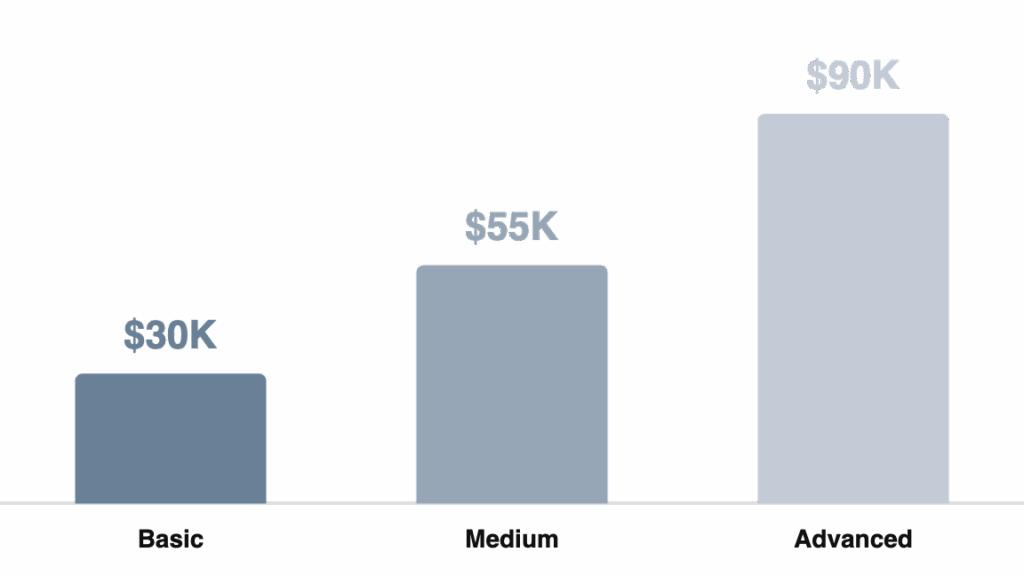
Implementation Costs
AI integration costs for SMEs can vary dramatically:
“Custom AI solutions can range from $10,000 to over $500,000, depending on the complexity. For instance, a chatbot might start at $10,000, while advanced analytics tools can climb beyond $100,000.” [28]
For computer vision specifically, development costs depend on the complexity of the application:
“Software complexity significantly impacts development costs, with basic AI vision software starting at $30,000, medium complexity solutions at $55,000, and advanced systems exceeding $90,000.” [34]
Hidden costs to consider include:
- Staff training ($5,000 to $50,000, depending on scope) [28]
- Potential operational downtime during implementation
- Ongoing maintenance and updates
- Data storage and processing
Small businesses using AI are seeing significant productivity gains: 73% report positive ROI within 3 months, average monthly savings of $1,250, time savings of approximately 15 hours per week, and average ROI of 2.8x after 6 months. [5]
Building Internal Capabilities
Successful AI implementation requires building internal capabilities to support and maintain AI systems over time.
Medium-sized enterprises often find themselves at a disadvantage when competing for talent with larger, more resource-rich organizations.
Training and Skill Development
The AI skills shortage continues to be a global challenge, particularly for SMEs.
To address this challenge, SMEs should invest in training existing staff:
“Training and development programs are crucial for building internal AI expertise, with a focus on customized learning paths and practical, hands-on experience.” [22]
According to Brilworks, “Businesses allocate up to 20% of their tech budget to AI, with 58% of companies planning to increase AI investments in 2025. 50% of companies surveyed intend to invest in on-the-job and internal training departments for AI adoption.” [16]
Partnering with Experts
External expertise can be valuable for SMEs implementing AI solutions: “Proper integration and implementation of these technologies require close cooperation with the providers of technology solutions and other professionals to increase effectiveness.” [3]
Options for external support include:
- Technology vendors with implementation services
- AI consultants specializing in SME implementations
- Managed service providers offering ongoing support
Marketing Applications of AI for SMEs
KEY POINTS
AI is transforming marketing for small and medium-sized businesses, enabling more personalized customer experiences, data-driven decision making, and automated campaign optimization. These technologies allow SMEs to compete more effectively with larger companies by leveraging advanced capabilities previously only available to enterprises with substantial resources.
Personalization and Customer Segmentation
AI-powered personalization has become increasingly important for e-commerce businesses, with 91% of customers more likely to shop with brands that remember their shopping history and provide relevant suggestions. [1]

Product Recommendations
AI-driven product recommendations have become a standard feature of e-commerce platforms, with significant impact on sales:
“Personalized recommendations already account for 24% of orders and 26% of revenue.” [13]
For SMEs, computer vision enhances recommendation capabilities by analyzing visual attributes of products:
“According to a survey, 91% of customers are more likely to shop with brands that remember their shopping history and provide relevant suggestions. In the e-commerce use case, computer vision algorithms process large volumes of user data to provide accurate personalized recommendations.” [1]
This technology allows small businesses to offer sophisticated recommendation experiences previously only available to large retailers.
Dynamic Content Personalization
AI enables SMEs to create personalized shopping experiences for different customer segments:
“In 2025, visualized AI will: Auto-adjust product placement using real-time performance metrics, Create custom visual layouts for specific customer groups, Show which visual elements lead to more sales.”
Chatbots and Virtual Assistants
AI-powered chatbots and virtual assistants have become essential tools for SMEs looking to provide responsive customer service without expanding their team.
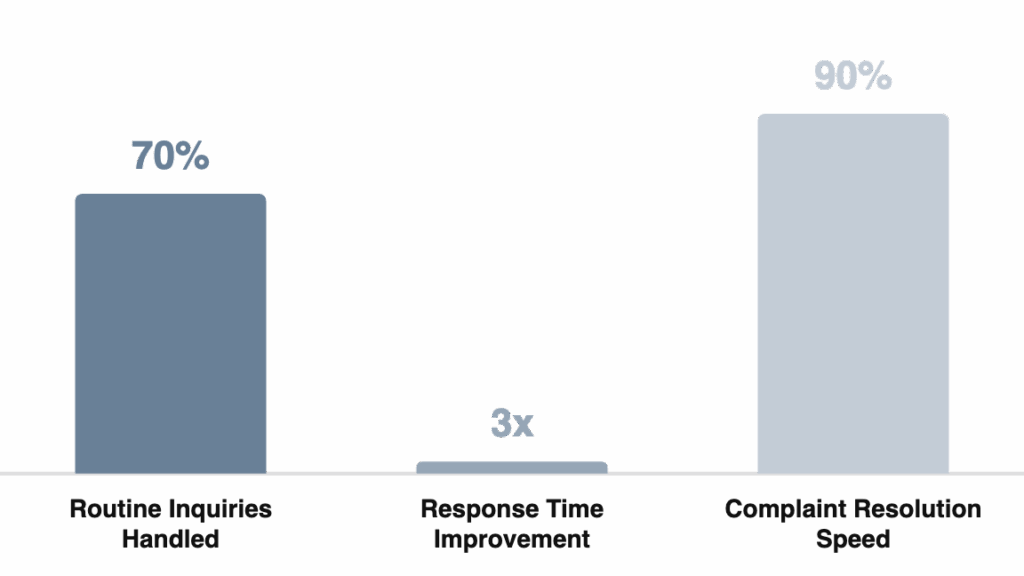
Implementation and Impact
Customer service AI tools offer some of the highest ROI for small businesses:
“The highest ROI category for most small businesses. AI chatbots handle 60-80% of routine inquiries, freeing your team for complex issues.” [5]
Specific benefits include:
- AI assistants can handle up to 37% of customer support tasks
- Enable 3x faster response times
- Achieve 90% faster complaint resolution [29]
As TeckNexus notes, “Instant, 24/7 customer support via AI-powered chatbots answering customer questions and helping to purchase merchandise helps in resolving issues easily. Virtual assistants such as chatbots aim to reduce the human workload, improve response times, and increase user experience.” [8]
Recommended Solutions
Several AI chatbot solutions are particularly well-suited for SMEs:
- “Best for Startups: Tidio (Free-$29/mo) – Simple setup, good free tier
- Best for Growing Businesses: Intercom ($74/mo) – Advanced automation
- Best for E-commerce: Gorgias ($60/mo) – Deep Shopify integration” [5]
Content Generation and Optimization
AI content generation tools have become valuable assets for SMEs looking to create engaging marketing materials efficiently.

Marketing Content Creation
AI transforms how SMEs approach marketing content creation:
“AI transforms how SMBs approach marketing by automating time-consuming tasks and delivering insights that inform smarter strategies. For example: Targeted Advertising, Content Creation, and Performance Analysis.” [20]
Specific applications include:
- Product descriptions that highlight key features and benefits
- Blog posts and articles optimized for SEO
- Social media content tailored to different platforms
- Email marketing copy personalized for different segments
According to Designveloper, “Generative AI is expected to generate or enhance 80% of digital content across advertising, journalism, and entertainment.” [19]
SEO Optimization
AI tools can significantly enhance SEO efforts for SMEs:
“AI SEO optimization e-commerce websites” is one of the key applications identified in the research plan. [0]
These tools can:
- Analyze competitor content and identify optimization opportunities
- Suggest keyword strategies based on search trends
- Optimize content structure and readability
- Monitor performance and recommend improvements
Predictive Analytics for Marketing
AI-powered predictive analytics enables SMEs to make more informed marketing decisions based on data rather than intuition.

Customer Behavior Prediction
AI systems can analyze historical data to predict future customer behavior:
“AI demand forecasting can reduce forecast errors by 20% and cut lost sales by 30%.” [13]
These predictions can inform various marketing decisions:
- Which products to promote to specific customer segments
- When to launch promotions for maximum impact
- How to allocate marketing budget across channels
- Which customers are at risk of churning
Campaign Optimization
AI can continuously optimize marketing campaigns to improve performance: “AI-driven ads can increase engagement by 60% and return on ad spend (ROAS) by 250%.” [13]
This optimization happens through:
- Real-time testing of different creative elements
- Automatic adjustment of targeting parameters
- Budget reallocation to highest-performing channels
- Personalization of messaging for different audience segments
As Vendasta notes, “AI empowers sales teams with tools to identify and prioritize leads, forecast sales, and tailor pitches to specific prospects. For SMBs, this means: Lead Scoring, Sales Forecasting, and CRM Automation.” [20]
Challenges and Limitations
KEY POINTS
SMEs face significant barriers to AI adoption, including implementation costs, technical expertise gaps, data quality issues, and integration challenges. Understanding these obstacles is essential for developing effective AI strategies that can overcome these limitations and deliver meaningful business value.
Technical Implementation Challenges
SMEs face several technical challenges when implementing AI solutions, particularly for complex technologies like computer vision.
More than 80% of AI projects never make it into production, with poor-quality data popping up as the biggest problem.
Integration with Existing Systems
One of the most significant technical challenges is integrating AI solutions with existing business systems:
“To make best use of computer vision, it is essential to understand where its application fits within existing processes. This involves asking a handful of relatively simple questions: What current processes can computer vision make more efficient? How are these processes currently being executed? What are the existing reporting methods? What actions are currently being taken based on these processes?” [36]
Integration challenges can include:
- Connecting AI systems with legacy inventory management software
- Ensuring data flows smoothly between systems
- Maintaining performance during integration
- Adapting existing workflows to incorporate AI insights
Data quality is a critical challenge for AI implementation, with poor-quality data being the biggest obstacle to successful AI projects. [16]
For SMEs, specific data challenges include:
“AI systems are only as good as the data they’re trained on. Many medium-sized enterprises struggle with data-related challenges, including: Fragmented data across multiple systems, Data silos within different departments, Inconsistent data formats and standards, Incomplete or inaccurate data, Lack of historical data for training AI models.” [21]
Cost and Resource Constraints
Financial limitations represent a significant barrier to AI adoption for many SMEs.

Implementation Costs
The cost of implementing AI solutions can be substantial:
“The costs associated with implementing AI solutions can be substantial, often requiring investments in: Infrastructure upgrades, Specialised software and tools, AI expertise (either through hiring or training), Data preparation and management.” [21]
For computer vision specifically:
“Hardware costs for computer vision cameras range from $30 to $3,500, depending on specifications like resolution and image transfer speeds.” [34]
“Software complexity significantly impacts development costs, with basic AI vision software starting at $30,000, medium complexity solutions at $55,000, and advanced systems exceeding $90,000.” [34]
These costs can be prohibitive for many small businesses: “The Bipartisan Policy Center reports that 55% of small business owners identify cost as a reason to not use AI.” [11]
Ongoing Maintenance and Updates
Beyond initial implementation, ongoing costs can be significant:
“The cost of implementing and operating AI solutions can be 50-200% of the initial development costs, depending on the scale, complexity, and support requirements.” [32]
Privacy and Regulatory Considerations
As AI adoption increases, privacy and regulatory considerations have become increasingly important for SMEs implementing these technologies.

Data Privacy Regulations
E-commerce businesses face significant regulatory challenges across multiple domains:
“In 2025, the e-commerce industry will face a big challenge. Many new regulations are coming into force, affecting e-commerce industry, particularly within the European Union (EU).” [39]
For computer vision applications specifically, biometric data privacy is a key concern:
“GDPR defines biometric data as ‘personal data resulting from specific technical processing relating to the physical, physiological, or behavioral characteristics of a natural person, which allow or confirm the unique identification of that natural person.'” [40]
The regulatory landscape is complex, with different requirements across regions: “No single comprehensive federal law controls the collection and use of personal data in general or biometric data in particular in the US. In the absence of a uniform federal regulation on the use of biometrics, the Federal Trade Commission (FTC) has tried to ensure fair biometric practices for consumers.” [42]
AI-Specific Regulations
New regulations specifically targeting AI applications are emerging:
“The EU AI Act is a law that regulates the use of AI systems in the EU. It focuses on risk classification, which classifies AI systems as unacceptable, high, limited and minimal. Depending on the level of risk, different requirements must be met to ensure the safe and ethical use of AI technologies. In risk class A (unacceptable risk), AI systems are banned.” [41]
Organizational and Cultural Barriers
Beyond technical and financial challenges, organizational and cultural factors can significantly impact AI adoption success.

Resistance to Change
Resistance to new technologies can be a significant barrier to AI adoption:
“AI implementation is not just about technology adoption, but about transforming how a business functions across operations, marketing, and customer service.” [30]
This transformation can be met with resistance from employees concerned about job security or disruption to established workflows.
Skills Gap and Training Needs
The AI skills gap presents a significant challenge for SMEs: “The AI skills shortage continues to be a global challenge, and medium-sized enterprises often find themselves at a disadvantage when competing for talent with larger, more resource-rich organizations.” [21]
Addressing this gap requires investment in training:
“Staff Training: Equipping employees with the skills to operate AI systems can be an overlooked expense. Training programs can range from $5,000 to $50,000, depending on the scope and number of participants.” [28]
Leadership Understanding and Commitment
Leadership support is crucial for successful AI implementation:
“A 2025 survey by Service Direct found that 62% of small businesses cite a lack of understanding about AI’s benefits as a barrier to adoption.” [11]
Without clear understanding of AI’s potential benefits and limitations, leadership may be reluctant to commit resources to implementation efforts.
Future Trends and Outlook
KEY POINTS
The future of AI in e-commerce for SMEs is characterized by increasing accessibility, integration with emerging technologies like AR/VR, and a growing focus on ethical and responsible implementation. While adoption challenges persist, the trajectory points toward AI becoming an essential competitive tool rather than a luxury, with successful businesses leveraging these technologies to enhance customer experiences and operational efficiency.
Emerging Technologies and Innovations
Several emerging technologies are poised to transform AI applications in e-commerce over the next few years.

Multimodal AI Systems
AI systems that can process and understand multiple types of data simultaneously are becoming increasingly important:
“Multimodal AI agents are emerging, capable of understanding voice input, interpreting documents, and providing multi-format outputs.” [18]
For e-commerce, this enables more natural and intuitive customer interactions:
“Emerging trends include hybrid voice and visual search capabilities, allowing users to verbally describe products while uploading images.” [43]
Edge AI for Real-Time Processing
Edge computing is transforming how AI applications are deployed: “Edge computing is transforming computer vision technology. Edge computing addresses this issue by processing some data closer to the source. This leads to lower latency and improves real time decision making. These patterns are critical for applications like autonomous vehicles and the smart city.”
For e-commerce applications like visual search and augmented reality, edge AI enables faster, more responsive experiences even with limited connectivity.
Advanced Augmented Reality
AR technology is rapidly advancing beyond simple virtual try-ons:
“Computer vision enables advanced augmented reality shopping experiences that go beyond simple virtual try-ons.” [1]
Future developments include:
“Visual search and AR are a natural pairing, allowing customers to interact with products in immersive ways. Virtual try-ons enable shoppers to see how items like clothing, accessories, or furniture would look in real life.” [43]
Evolving Business Models
AI is enabling new business models and approaches for e-commerce SMEs.

AI-as-a-Service for SMEs
AI-as-a-Service models are making advanced capabilities more accessible to SMEs:
“AI-as-a-Service (AIaaS) models have reduced technical and financial barriers to AI adoption, with a 230% year-over-year increase in SMB subscriptions.” [18]
These models allow SMEs to access sophisticated AI capabilities without significant upfront investment:
“Cloud-based AI solutions eliminate the need for expensive hardware, making implementation more cost-effective.” [15]
Hyperlocal Marketing
AI is enabling more targeted, location-specific marketing approaches: “As AI continues to evolve, its potential for SMBs will only grow. By 2025, we anticipate: Increased Integration, Hyperlocal Marketing, Voice and Visual Search, and Enhanced Collaboration.” [20]
This allows SMEs to compete more effectively in their local markets by delivering highly relevant content and offers to nearby customers.
Subscription and Hybrid Pricing Models
Many e-commerce businesses are exploring new pricing models enabled by AI:
“Many businesses are now exploring hybrid models, offering customers the best of both worlds. For example: Amazon offers PAYG for individual purchases and subscriptions like Prime for frequent buyers.” [33]
Predictions for SME Adoption
The future of AI adoption among SMEs shows both challenges and opportunities.
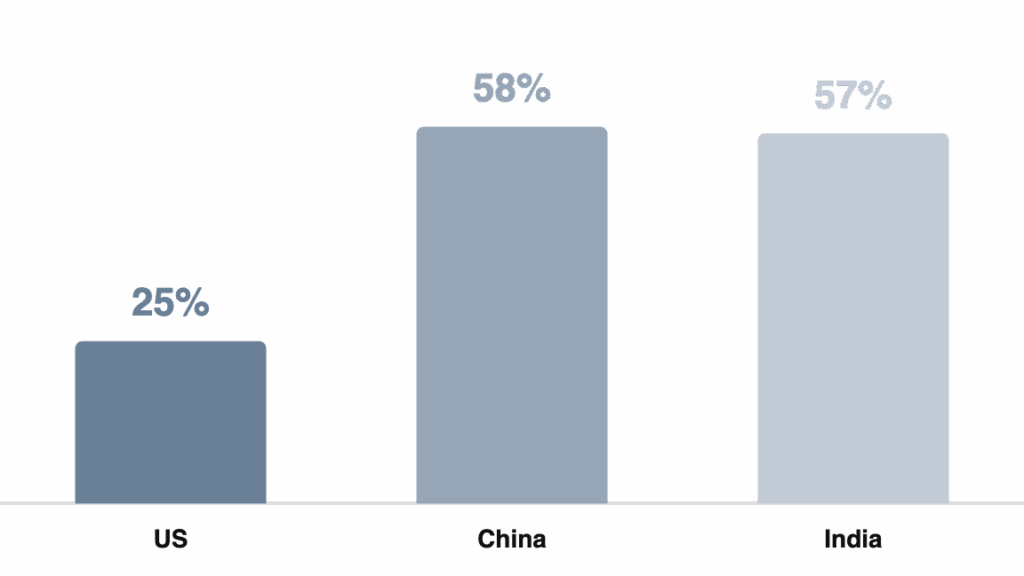
Adoption Trajectory
Predictions for AI adoption among SMEs vary:
“By 2026, over 50% of SMBs are expected to adopt at least one AI-powered automation solution.” [18]
However, current trends show some hesitation:
“Only 23% of small business owners would ‘definitely consider’ adding AI in 2025, down from 27% in 2024.” [11]
This suggests that while overall adoption will increase, it may not be as rapid or universal as some predictions suggest.
Focus Areas for Future Adoption
Certain AI applications are likely to see faster adoption among SMEs: “AI agent adoption is primarily concentrated in customer service (38%), sales and marketing (32%), financial analytics (19%), and operations (11%).” [18]
For computer vision specifically:
“Future computer vision solutions will likely become more tailored to specific industry needs, offering dynamic pricing, personalized experiences, and real-time analytics.” [2]
Competitive Necessity vs. Luxury
AI is increasingly becoming a competitive necessity rather than a luxury:
“91% of small businesses using AI report that it has made their business more successful.” [29]
The gap between AI adopters and non-adopters is likely to widen:
“78% of growing SMBs plan to increase their AI investment next year, compared to only 55% of declining businesses.” [10]
Strategic Recommendations for SMEs
Based on current trends and future outlook, several strategic recommendations emerge for SMEs considering AI implementation.
A successful AI transformation isn’t just about the technology—it’s about aligning AI solutions with your business goals.
Start with High-Impact, Low-Complexity Applications
SMEs should begin their AI journey with applications that offer clear ROI and relatively low implementation complexity:
“The experience of tech-savvy SME leaders like our persona Sarah Lee shows that the keys to success are identifying high-impact use cases, starting with manageable projects, ensuring integration with current workflows, and bringing your team along for the journey.” [29]
For computer vision specifically, inventory management and visual search offer compelling starting points with demonstrated ROI.
Build a Foundation for Future Expansion
While starting small, SMEs should build a foundation that supports future expansion:
“A successful AI transformation isn’t just about the technology—it’s about aligning AI solutions with your business goals. Here’s how SMBs can prepare: 1. Assess Business Needs, 2. Budget Effectively, 3. Choose the Right Solution, 4. Partner with Experts, 5. Start with Pilot Projects, 6. Track ROI, 7. Ensure Compliance.” [28]
This includes investing in data infrastructure, building internal expertise, and creating a culture that embraces innovation.
Focus on Customer Experience Enhancement
Customer experience improvements often offer the most immediate and visible returns on AI investment:
“After discussing selection, implementation, and optimization, focus your AI strategy on these three key areas: Improving Customer Experience, Boosting Operational Efficiency, and Driving Revenue Growth.” [13]
Technologies like visual search, augmented reality try-ons, and personalized recommendations can significantly enhance the customer experience while differentiating SMEs from competitors.
Conclusion
The landscape of AI in e-commerce for small and medium-sized enterprises in 2025 presents a complex picture of opportunity and challenge. While adoption rates show some variability across different business segments, the potential impact of AI technologies—particularly computer vision—on business operations and customer experiences is undeniable.

Computer vision applications offer particularly compelling opportunities for SMEs in e-commerce, from inventory management and quality control to visual search and augmented reality experiences. These technologies, once accessible only to large enterprises with substantial resources, are increasingly available to smaller businesses through cloud-based services, no-code platforms, and subscription pricing models.
The research reveals several key insights for SMEs considering AI implementation:
- Start with specific, high-value use cases rather than attempting comprehensive transformation. Applications like inventory management, customer service automation, and personalized recommendations often deliver the quickest returns.
- Leverage cloud-based and pre-built solutions to reduce implementation costs and technical complexity. The growing ecosystem of AI-as-a-Service offerings makes sophisticated capabilities accessible without significant upfront investment.
- Address data quality and integration challenges early in the implementation process. Poor data quality remains one of the primary reasons AI projects fail to deliver expected results.
- Invest in building internal capabilities through training and partnerships with external experts. The AI skills gap continues to be a significant barrier to adoption, particularly for smaller businesses.
- Prioritize privacy and compliance as regulatory frameworks evolve. Ethical and responsible AI implementation is not just a legal requirement but increasingly a competitive advantage.
While challenges remain, the trajectory is clear: AI is becoming an essential competitive tool rather than a luxury for e-commerce businesses of all sizes. Those that successfully navigate the implementation challenges and leverage these technologies to enhance customer experiences and operational efficiency will be well-positioned for success in the increasingly digital retail landscape.
FAQs
What is AI Vision in e-commerce?
AI Vision refers to the integration of computer vision and artificial intelligence to analyze product images, customer behavior, and visual search patterns to improve the online shopping experience.
How does AI Vision enhance the online shopping experience?
AI Vision enables more accurate visual search, personalized product recommendations, and enhanced customer engagement by understanding how users interact with visual content.
Can AI Vision improve product recommendations?
Yes, AI Vision analyzes product images and user behavior to deliver personalized recommendations that go beyond text-based algorithms.
What role does AI Vision play in visual search?
AI Vision allows users to search using images instead of keywords, improving search accuracy and helping customers find products that match their visual preferences.
How does AI Vision impact customer conversion rates?
By making product discovery easier and more intuitive, AI Vision reduces friction in the shopping journey, leading to higher conversion rates and better user satisfaction.
Is AI Vision only useful for fashion or visually-driven industries?
No, AI Vision is beneficial across a wide range of industries, including furniture, electronics, and home goods, wherever product visuals play a significant role in purchasing decisions.
What are the SEO benefits of using AI Vision on e-commerce websites?
AI Vision can help optimize visual content for search engines, enhance alt text automation, and increase engagement metrics, all of which contribute to better SEO performance.
Can AI Vision be integrated with existing e-commerce platforms?
Yes, AI Vision technologies can be integrated into popular platforms like WooCommerce, Shopify, and Magento with the help of plugins or custom development.
What are the future trends of AI Vision in e-commerce?
Emerging trends include AI-generated product imagery, real-time visual personalization, and seamless integration with AR/VR technologies to deliver immersive shopping experiences.
How can my e-commerce business get started with AI Vision?
Start by evaluating your visual content strategy, then work with an agency or tech partner like Zen Agency to integrate AI Vision tools tailored to your specific industry and audience.
At Zen, we don’t just improve search rankings; we help businesses thrive. Whether you’re looking to dominate local searches, expand your eCommerce reach, or build a robust online presence, our team is here to help.
Contact us today to schedule a free consultation and see how our expert SEO services can transform your business. Let Zen be your partner in success!
Sources
- Shopdev, “7 Computer Vision Use Cases in E-Commerce for 2024,” April 4, 2024.
- ResearchGate, “AI-Driven Computer Vision Solutions for SMEs: Revolutionizing Quality Control and Inventory Processes in Retail and Manufacturing,” December 2024.
- Journal of Artificial Intelligence General Science (JAIGS), “Computer vision applications for SMEs in retail and manufacturing to automate quality control and inventory management processes: Artificial Intelligence /Machine Learning Enhancements,” Oct 18, 2024.
- Slashdot, “Top Computer Vision Software for Small Business in 2025,”.
- Which AI Is Best, “AI Tools for Small Business: Complete ROI Guide + Calculator,” January 2025.
- Seekmeai, “The ROI of AI for Small Businesses: What to Expect,” November 15, 2023.
- Service Direct, “2025 Small Business AI Report,” November 2024.
- TeckNexus, “AI in E-Commerce: How Small Businesses Can Compete with Giants,” May 26, 2025.
- All About AI, “The 2025 Global AI Adoption Report: Is Your Country Leading the Revolution?,” May 19, 2025.
- Salesforce, “New Research Reveals SMBs with AI Adoption See Stronger Revenue Growth,” 2025.
- NEXT Insurance, “Small business AI adoption declines to just 28%,” May 28, 2025.
- Copenhagen Business School, “Barriers to Adopting AI Technology in SMEs,”.
- Uncommon Insights, “AI Tools for eCommerce: 2025 Implementation Guide,”.
- LinkedIn, “AI for eCommerce: Unlocking growth in 2025,”.
- Sellbery, “Affordable AI for Small Businesses: A Comprehensive Guide,” November 20, 2024.
- Brilworks, “The Roadmap to Successful AI Implementation,” September 11, 2024.
- LinkedIn, “AI Implementation Strategies for Small Businesses in 2025,”.
- Aalpha Information Systems, “AI Agents for Small Businesses – In-Depth Guide,” May 10, 2025.
- WebOsmotic, “What’s the Real ROI of AI in 2025?,” 2025.
- Vendasta, “AI as the Catalyst for SMB Growth in 2025,” March 19, 2025.
- Elnion, “Navigating the AI Frontier: Top Three Challenges for Medium-Sized Enterprises in 2025,” March 4, 2025.
- ProfileTree, “Overcoming Challenges in AI Adoption for SMEs: A Practical Guide to Embracing Technology,” 13th Apr 2025.
- ScienceSoft, “Computer Vision for Inventory Counting in 2025,” 2024.
- ezML, “Automating Small Item Inventory Management with Computer Vision AI,” May 20, 2024.
- inFlow Inventory, “Why Supply Chains Use AI Computer Vision in Inventory Monitoring,” May 28th, 2025.
- Motive, “Computer Vision Guide 2025 – Visual AI,” 2025.
- Innovectus, “Building Your First AI Implementation Roadmap: A 5-Step Approach,” May 11, 2025.
- Performix Business Services LLC, “Affordable AI Solutions for SMBs: Plan Your 2025 Transformation,” 2025.
- OneDayOneGPT, “2025 Ultimate Guide: AI Assistants for SMEs – Proven ROI Strategies & Implementation,” April 2025.
- AdamFard, “How to Implement AI in your Business,”.
- Microsoft, “Azure AI Vision pricing,”.
- Codica, “AI cost in 2025: Everything You Need to Know,” November 13, 2024.
- Jenny Smith, “Pay-As-You-Go vs Subscription: Which is Best for E-Commerce,” December 9, 2024.
- Softarex, “Computer Vision Price Guide Every Business Needs,” December 6, 2024.
- Roboflow, “Computer Vision Applications 2025: Common Use Cases,” March 11, 2025.
- SeeChange, “Operationalizing Computer Vision in retail: from concept to ROI,” August 08, 2024.
- Market Report Analytics, “Market Deep Dive: Exploring AR Virtual Try-On Trends 2025-2033,” 2025.
- BrandXR, “2025 Augmented Reality in Retail & E-Commerce Research Report,” May 31, 2025.
- CookieScript, “E-Commerce Compliance 2025,” 2025.
- Secure Privacy, “Building GDPR-Compliant Emotion Recognition,” May 22, 2025.
- Dallmeier electronic GmbH & Co.KG, “Video security technology and biometric facial recognition under new EU AI Act,” August 2, 2024.
- iDox.ai, “Biometric Data Privacy Regulations – Top Laws and Acts to Follow Statewide,” June 2025.
- AdLift, “Visual Search in Online Shopping: The Future of Retail in 2025,” January 29, 2025.
- Designveloper, “Computer Vision Technology: 5 Trends to Watch in 2025,” February 2025.
- Smart Merchandiser, “Digital Merchandising in 2025: The Next Wave of AI and Smart Automation,” December 13, 2024.



